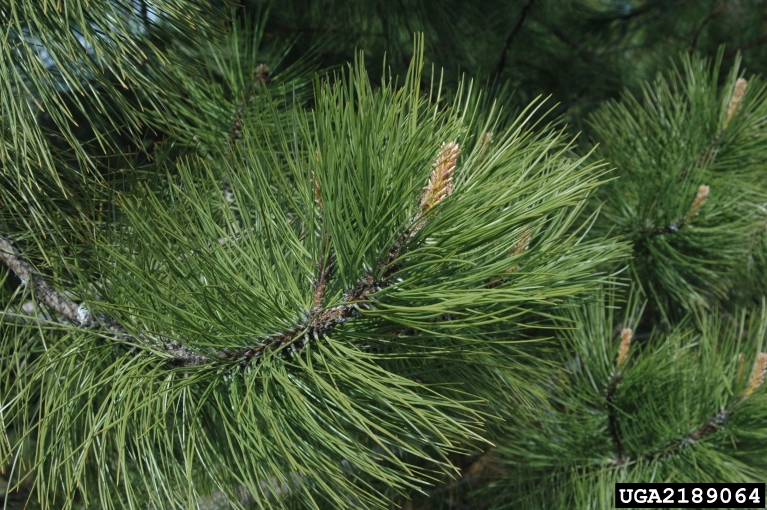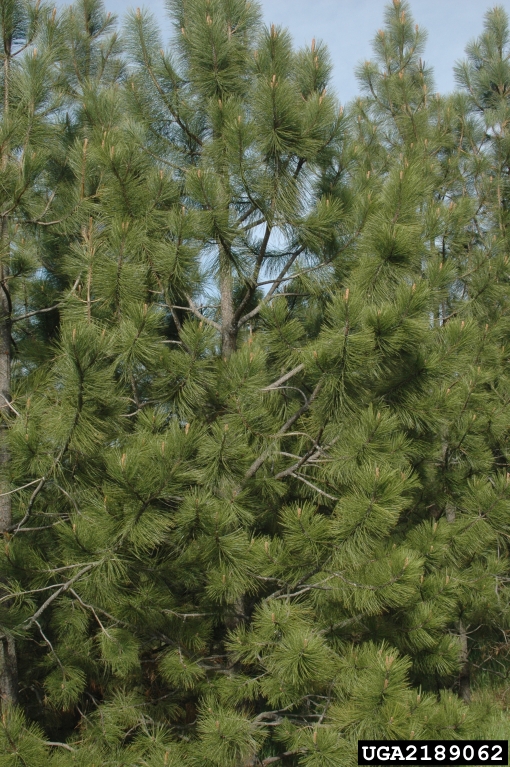June is a great time to get out and enjoy all of the wonderful trees and shrubs that are growing and blooming. For the June plant of the month I am going to go with a native tree that adds year round interest to your landscape, Ponderosa Pine. This tree was added to the ReTree Nebraska list of 14 trees for 2014.
Ponderosa Pine is a native evergreen tree that grows up to 65 feet or taller and 30 feet wide. This pine has needles that are 5-10 inches long and they are held on the tree in groups of 3's, but sometimes the needles are only held in groups of 2's. The bark becomes cinnamon red colored on older trees. The cones are found on the end of the branches alone or in a group of 3-5. The cones are 3-6 inches long and up to 2 inches wide and have a sharp point on the end of the scales.
Ponderosa pine can be used as a specimen tree or in mass plantings in your landscape or it can be incorporated into a windbreak to be used with other tree species. It is also a great tree to be planted on bare soils or almost bare rocks to help with erosion control. Ponderosa pine is a forest tree that does not tolerate shade or wet soil, but it is tolerant of salt and alkaline soils. It also is drought tolerant. Pine wilt is a disease that has been identified in Ponderosa Pines but it has not been known to kill the tree, according to University of Nebraska - Lincoln Extension, native pines have shown more resistance to the disease than non-native species.
According to Michael A. Dirr in the book "Manual of Woody Landscape Plants", Ponderosa Pine furnishes more timber than any other American pine and is second only to Douglas fir in total annual production. Native Americans used ponderosa pine for medicinal, building and household, food, and ceremonial purposes, according to the USDA NRCS. Ponderosa pine is used for the construction of buildings. The USDA NRCS also says that many bird species, chipmunks, mice, porcupines, and squirrels benefit from Ponderosa pine seeds for food, needles and bark for nesting, and trees for general habitat and cover.
Ponderosa pine is a great tree species to use anywhere in your landscape. If you have experienced windbreak death of scotch or Austrian pines due to pine wilt, you can replace some of those trees with a more resistant species such as Ponderosa pine. It is a great, large tree that is a benefit to many wildlife animal species for food and for habitat. So the next time you are looking to plant a new tree or new windbreak, choose Ponderosa pine.


